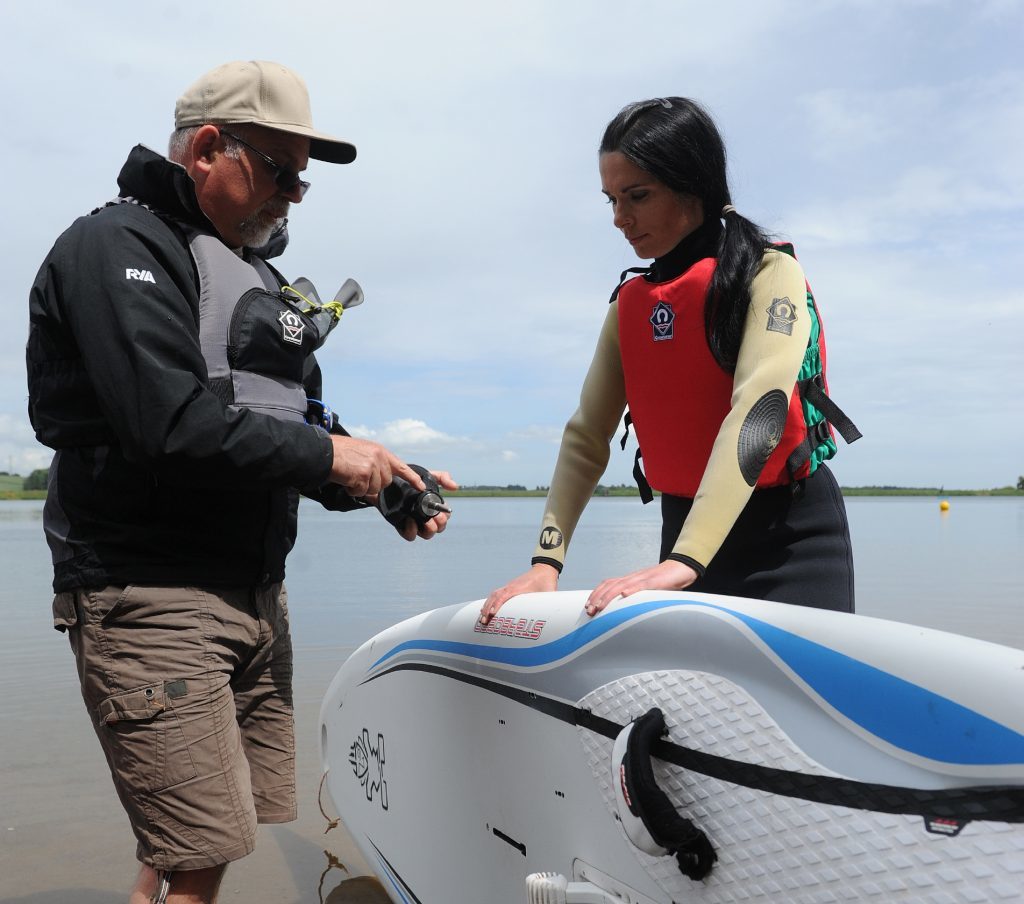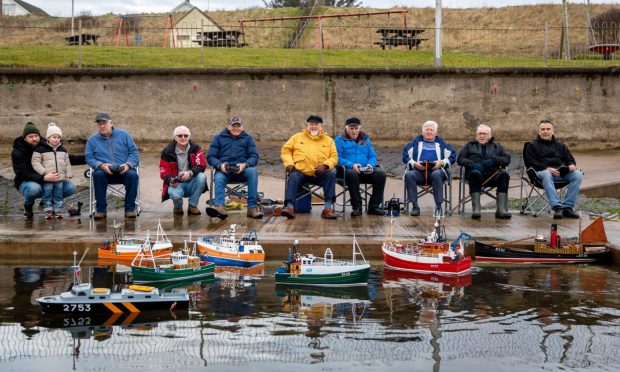I’m blasting across the water with the wind in my hair and the sun on my back.
The sail tugs and pulls at my arms as the wind gathers strength and powers me towards the yellow buoy floating in the middle of the reservoir.
I’ve come to Monikie Country Park in Angus for a windsurfing lesson with ANGUSalive countryside ranger Pete Lunnon.
The session, which, combines the elements of surfing and sailing, is going swimmingly well…until the wind changes direction. I attempt a turn and belly-flop unceremoniously into the water.
“That’s why some beginners call it wind-swimming,” laughs Pete, as I choke and gasp for air while scrambling back onto the board.
When I’d first entered the water, I’d done everything in my power not to fall in and as a result, I found myself tensing up – not a good thing for balance.
Better to relax, go with the flow, and if you fall in, you fall in. Turns out the water is 16C, so it’s not too traumatic.
Once I’ve been dunked like a Halloween apple a good few times, my confidence soars and I speed off into the horizon.
As I’m zipping along, it seems pretty fast, but Pete reckons it’s probably “jogging pace”, which is around 6mph, or 5.2 knots.
That’s compared with the world record for windsurfing – a staggering 53.27 knots (60mph), achieved in 2015 by French windsurf legend Antoine Albeau while speedsailing in Namibia in a custom-built “ditch” designed to offer perfect water conditions.
Ah well, maybe one day. For now, I’m content just to play around on the water.
But it’s a lot more than just play. Windsurfing is a massive adrenalin boost which hones your concentration, strengthens muscles (my thighs are aching), increases confidence, and most importantly, is a huge amount of fun.
The last time I attempted it was in 2008, when I spent a weekend in Tiree, one of the windiest places in the country.
I was covering the Tiree Wave Classic – a world championship windsurfing event – for a national newspaper, and once the heroes of the sport had shown off their skills at sea, I had a lesson on a relatively calm inland loch.
Tiree’s version of “relatively calm” is very windy compared with Monikie’s reservoir, and the strong gusts ensured I was swimming more than windsurfing.
This time, at Monikie, I get on much better.
Pete is a great instructor, full of enthusiasm and helpful suggestions, as is Phil Underwood, coxswain of the safety boat which chugs alongside me.
Once he’s shown me the proper stance, to allow for the best control, he tells me to lift the sail up with the rope attached, being careful not to topple backwards.
When I’m up, it’s a case of holding the sail correctly – in the “secure” position – and knowing how to use it in relation to the wind.
The mast should be facing the front of the board, you hold on to the boom and the wind should be behind you.
To turn, you go back to the “secure” position, lean your body to the back of the board and towards the wind, and take small steps until you’re facing the other way.
“Imagine opening and closing a door as you let the sail in and out,” Pete tells me. “Open the door to catch more wind, and close it when you want less.”
There’s also the tendency to stick your bottom out, as I do, but Pete’s advice is to lean back from the shoulders. Easier said than done!
He also refers to my back arm as the “power arm”, telling me I can use this to accelerate and decelerate.
The great thing about windsurfing is that you don’t get any speed without control, so the more control you have, the better you get and the faster you go.
At times, the wind dies and I float gently across the water, doing little more than admiring the views and trying to stay upright.
When it whips up, I find myself being pulled in all kinds of directions, and frequently, into undergrowth at the edge of the reservoir.
Luckily, Phil Underwood is only too happy to pick me up in the safety boat and tow me back out into the middle.
It’s not uncommon, he tells me, for dozens of learner windsurfers to end up stuck at the side, all needing a lift back out.
Throughout the summer, Monikie Country Park, which is run by ANGUSalive, lays on lessons for beginners, where all kit, instruction and safety cover are provided.
Lessons for children are also available as part of the ANGUSalive Holiday Activities programme which offers a wide range of activities across Angus.
Antoine Albeau, watch out!
info
Windsurfing instruction and hire of equipment is available at Monikie Country Park, Panmure Road, Monikie, until the end of September.
See www.angusalive.scot for more details and to book or contact 01382 370202.















